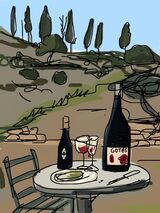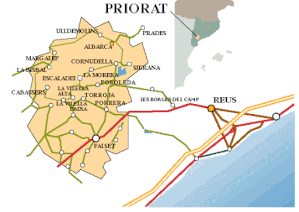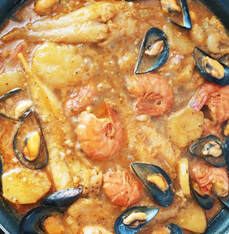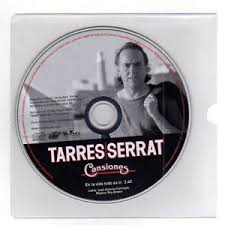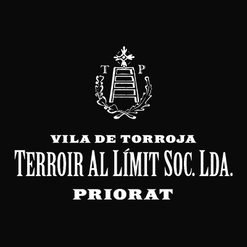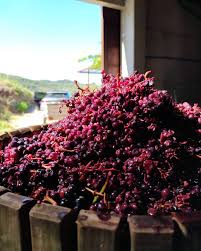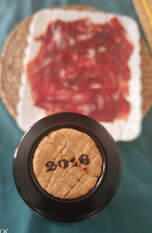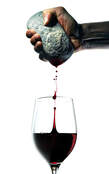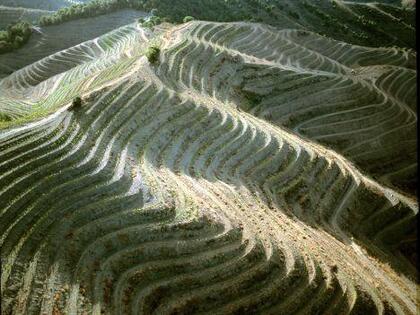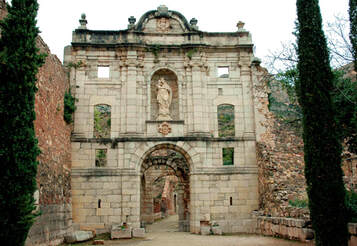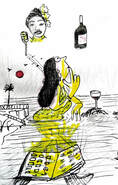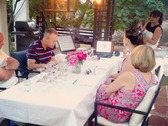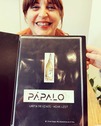|
As its name suggests, Vi de la vila de Torroja is a red wine made with grapes harvested around the town of Torroja (Tarragona). In this case, unlike what happens with the most exceptional cuvées from Terroir al Límit, village wine is made with two different varieties: Garnacha and Cariñena, and interprets two different soils: slate and clay. DO. PRIORAT. TERROIR AL LIMIT SOC. LDA. 93 Parker points. The Terroir al Límit winery has its own old vineyards, cultivated on slopes, with vines from 50 to 100 years old, working with autochthonous varieties and with biodynamic practices. The philosophy of the winery is based on the production of wines with character that subtly show us in an elegant and fresh way, the unique terroir of Priorat. A history of old and extreme vines, located in small plots and caressed by the Mediterranean climate and others not so old, grown on trellises. After a traditional elaboration, Torroja Vi la de la Vila undergoes an aging of 12 months in French oak foudres of second wine (Foudres are large capacity vats that, thanks to their size, reduce the contact of the wine with the wood, allowing the aging to continue without adding too many tannins and toasted aromas to the wine) This bottle of wine has a wait of several months to be uncorked and shared, an unexpected and precious gift that arousing a lot of curiosity and looking for the right moment, did not disappoint. It was seducing us little by little, very gracefully.  Subtle and slender red, suggestive ripe plum color and long tears. Very colored and clean cork and her dress with low layer. In the NOSE with aromas of liquorice, herbs, almonds and that pink pepper that multiplies with the heat of the cheeks. In PALATE it is fresh and juicy at the same time, round and expressive. Its texture is silky, reminiscent and inspiring of Bourgogne wines thanks to its very delicate tannins ... Achieved acidity that allows it to be vigorous without overwhelming. The wood is present, but it does not stand out at all and its warmth shows serenity. The finale is long and personal, as a young fighter and innovative spirit. It is recommended to open one hour in advance before serving or use an aerator. Excellent save. It is the ideal wine to begin in the philosophy of Terroir ... Although we do not perceive the expected mineral / slate touch ... We could feel its excellence. It pairs well with a Mediterranean diet, famous for its dishes with a pure and authentic flavor, harmonious without hiding the authentic character of the land and the sea, so we tried an ibérico ham (acorn-fed), Payoyo goat cheese, blue cream cheese and they accompanied well. We continue to taste with an orange duck pate and we miss that it did not have that “hunting touch”… But the star dish was a rockfish “peix suquet” which thanks to its sauce intensified the notes of almond and pink pepper. And musically speaking, we also opted for something genuine and Catalan such as Serrat and his palindrome Tarres. El Priorat is the second qualified denomination of origin in Spain after Rioja and is probably one of the areas where the immensity is best palpable... El Priorat (Tarragona) is a mystical land, of great wines, which were born in the light of meditation and prayer fostered by a monastic foundation that gave the region its name and is responsible that the word Priorat means wine and excellence. Terroir al Límit is a winery initially formed by two friends: Eben Sadie, from South Africa, where he also produces wine, and Dominik Huber, from Germany. Later he participates and joins the Jaume Sabaté project. A project as inspired as it is risky, totally focused on the vineyard, recovering traditional production practices and reducing the role of wood to a minimum The winery works with the intention to rescue the spirit of the wines as they were made before the so-called Priorat revolution. They seek the minimum intervention and try to ensure that the consumer gets the maximum expression of the Garnacha and Cariñena in each bottle that is uncorked. French philosophy applied to the terroir and distinguishing between village wine (slightly anticipating the official zoning of the region and the creation of the ‘vi de vila’ category), ‘coster wine’ and high altitude wine that would be the equivalent of ‘grand cru’; clear preference for Cariñena and Garnacha better that does not come from slate soils; excessive ripening is not sought and it is harvested rather early; Fermentation is carried out with stalks (lately it is removed before it is completely finished) in open plastic vats and the wood is limited to the minimum expression, favouring large containers and especially foudres. "We don't want to make up anything," says Dominik A. Huber of his wines. "If you believe in your territory and your land, you don't need a barrel." Of course, it can be considered an almost sacrilegious statement in the country that devotes the most to wood. But we are in Priorat, probably the region that concentrates the largest number of wine visionaries and romantics, and the small project by the German Huber is a complete departure from what had been done so far in the area. As Huber affirms, “it can be a unique experience to drink a special wine that really thrills you and that has the ability to transport you to a certain terroir”. And there is no doubt that Priorat is full of impressive and exciting landscapes: a labyrinth of mountains, endless curves and old vines planted on steep slopes on slate soils (the so-called 'llicorella') 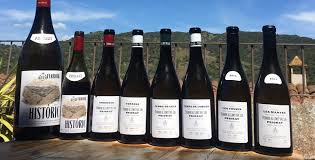 Mystical legends The legend details that the order sent some monks to find the most suitable place for their needs. During this time they met a shepherd who explained to them that in his dreams he saw angels ascending to heaven by stairs supported by the stump of a pine tree that was in the place where he led his flocks to graze. This geography, as beautiful as it is full of hardness, already powerfully attracted the Carthusian monks who, in the 12th century, saw a stairway to heaven in the rocky Montsant mountain range, settled at its feet and notably promoted the cultivation of the vineyard.The monks interpreted it as a sign from God and there they built a small cloister that would be the origin of the Charterhouse of Santa Maria de Scala Dei, which means "stairway to God." It was an expansion center for other religious foundations and had three cloisters and up to 30 cells. The Carthusian monastery was a fundamental promoter of vine cultivation in the region that currently makes up the «Denomination of Origin Qualified Priory». Scala Dei was a monastery founded in the 12th century, considered to be the first Carthusian monastery and the first monastery of the order of San Bruno in the Iberian Peninsula. It dates back to the year 1194, in which King Alfonso II the Chaste donated the lands to the Order of the Carthusians to build a monastery.
0 Comentarios
Como su propio nombre indica, Vi de la vila de Torroja es un tinto elaborado con uvas vendimiadas en los alrededores del pueblo de Torroja (Tarragona). En este caso, a diferencia de lo que sucede con las cuvées más excepcionales de Terroir al Límit, vino de pueblo se elabora con dos variedades distintas: Garnacha y Cariñena, e interpreta dos suelos distintos: pizarra y arcilla. D.O. PRIORAT. TERROIR AL LIMIT SOC. LDA. 93 puntos Parker.  La bodega Terroir al Límit dispone de viñedos propios, viejos cultivados en laderas, con cepas de entre 50 y 100 años de edad, trabajando con las variedades autóctonas y con prácticas biodinámicas. La filosofía de la bodega se basa en la producción de vinos con carácter que nos muestran sutilmente de una forma elegante y fresca el terroir único del Priorat. Una historia de viñas viejas entre 50 y 110 años, extremas, situadas en pequeñas parcelas y acariciadas por el clima mediterráneo y otras no tan antiguas, cultivadas en espaldera. Después de una elaboración tradicional, Torroja Vi la de la Vila pasa por una crianza de 12 meses en foudres de roble francés de segundo vino (Los foudres son tinas de gran capacidad que, gracias a su tamaño, reducen el contacto del vino con la madera, permitiendo continuar la crianza sin añadir demasiados taninos y aromas tostados al vino) Esta botella de vino, tiene una espera de varios meses para ser descorchada y compartida, un inesperado y preciado regalo que despertando mucha curiosidad y buscando el momento adecuado, no defraudó. Nos fue ganando poco a poco, muy grácilmente. Tinto sutil y esbelto, de sugerente color ciruela madura y lágrima larga. Su corcho muy coloreado y limpio, su vestido, de capa baja. En NARIZ con aromas de regaliz, herbales, de almendras y esa pimienta rosa que se multiplica con el calor de las mejillas. En PALADAR es fresco y jugoso a la par, redondo y expresivo. Su textura es sedosa, recuerda e inspira a los vinos de Borgoña gracias a unos taninos finísimos… Lograda acidez que le permite mostrarse vigoroso sin abrumar. La madera se intuye, pero no resalta en absoluto y su calidez demuestra serenidad. Su final es largo y personal como un espíritu joven, luchador e innovador. Se recomienda abrir una hora antes de servir o utilizar un aireador. Excelente guarda. Es el vino ideal para iniciarse en la filosofía del Terroir…Aunque no percibimos el esperado toque mineral/pizarroso…Sí , su excelencia.
 Y musicalmente hablando, pues nos decantamos también por algo genuino y catalán como puede ser Serrat y su palíndromo Tarres. El Priorat es la segunda denominación de origen calificada de España tras Rioja y es probablemente una de las zonas en donde mejor se palpa la inmensidad ... El Priorat (Tarragona) es una tierra mística, de grandes vinos, que nacieron a la luz del recogimiento y de la oración propiciados por una fundación monacal que dio nombre a la comarca y que fue la responsable de que la palabra Priorat supiera a vino y a excelencia. Terroir al Límit es una bodega formada inicialmente por dos amigos: Eben Sadie, de Sudáfrica, donde él también produce vino, y Dominik Huber, alemán. Posteriormente participa y se añade al proyecto Jaume Sabaté. Un proyecto tan inspirado como arriesgado, totalmente centrado en la viña, recuperando prácticas de elaboración tradicionales y reduciendo el protagonismo de la madera al mínimo. La bodega trabaja con la intención de rescatar el espíritu de los vinos tal y como se elaboraban antes de la conocida como revolución del Priorat. Buscan la mínima intervención y tratar de que al consumidor le llegue la máxima expresión de la Garnacha y la Cariñena en cada botella que se descorcha. Filosofía francesa aplicada al terruño y distinguiendo entre vino de pueblo (anticipándose ligeramente a la zonificación oficial de la región y a la creación de la categoría vi de vila), vino de coster y vino de altura que sería el equivalente al grand cru ; preferencia clara por la Cariñena y Garnacha mejor que no provenga de suelos de pizarra; no se buscan maduraciones excesivas y se vendimia de forma más bien temprana; la fermentación se realiza con raspón (últimamente se retira antes de que finalice por completo) en cubas abiertas de plástico y la madera se limita a la mínima expresión, favoreciendo los envases de gran tamaño y en especial los foudres. "No queremos maquillar nada", dice Dominik A. Huber de sus vinos. "Si crees en tu territorio y en tu terruño no necesitas una barrica". Desde luego, puede considerarse una afirmación casi sacrílega en el país que más devoción presta a la madera. Pero estamos en el Priorat, probablemente la región que concentra el mayor número de visionarios y románticos del vino, y el pequeño proyecto del alemán Huber es un punto y aparte con respecto a lo que se había hecho hasta ahora en la zona. Como afirma Huber, “puede ser una experiencia única beber un vino especial que realmente te conmueve y que tiene la capacidad de transportarte a un cierto terroir”. Y qué duda cabe que el Priorat está lleno de paisajes impactantes y que emocionan: un laberinto de montañas, curvas sin fin y viejas viñas plantadas en pronunciadas laderas sobre suelos de pizarra (la llamada 'llicorella'). 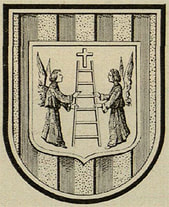 Leyendas místicas La leyenda detalla que la orden envió unos monjes a buscar el lugar más adecuado a sus necesidades. Durante este tiempo encontraron un pastor que les explicó que en sueños veía a unos ángeles que subían al cielo por unas escaleras apoyadas en la cepa de un pino que había en el lugar donde él llevaba a sus rebaños a pastar. Esta geografía tan bella como llena de dureza ya atrajo poderosamente a los monjes cartujos que, en el siglo XII, vieron en la rocosa sierra del Montsant una escalera hacia el cielo, se asentaron a sus pies e impulsaron notablemente el cultivo de la viña. Los monjes lo interpretaron como una señal de Dios y allí mismo construyeron un pequeño claustro que sería el origen de la Cartuja de Santa Maria de Scala Dei, que significa «escalera hacia Dios”. Fue un centro de expansión para otras fundaciones religiosas y llegó a tener tres claustros y hasta 30 celdas. La cartuja fue impulsora fundamental del cultivo de la vid en la región que actualmente conforma la «Denominación de Origen Calificada Priorato». Scala Dei fue un monasterio fundado en el siglo XII, considerado como la primera cartuja y el primer cenobio de la orden de San Bruno en la Península Ibérica. Se remonta al año 1194, en el que el rey Alfonso II el Casto donó las tierras a la Orden de los Cartujos para que construyeran un monasterio. Mis Encuentros con el Vino. Irene Sayas.
|
irene sayasEntusiasta y conocedora de la magia del vino. El vino evoca, convoca y provoca... *Archivos:
|
Cómo contactarnos / How to contact usTeléfono 690 073 871 |
Suscribirse / SubscribeÚnete a nuestra lista de correo hoy!
Sign up to our mailing list now! |

